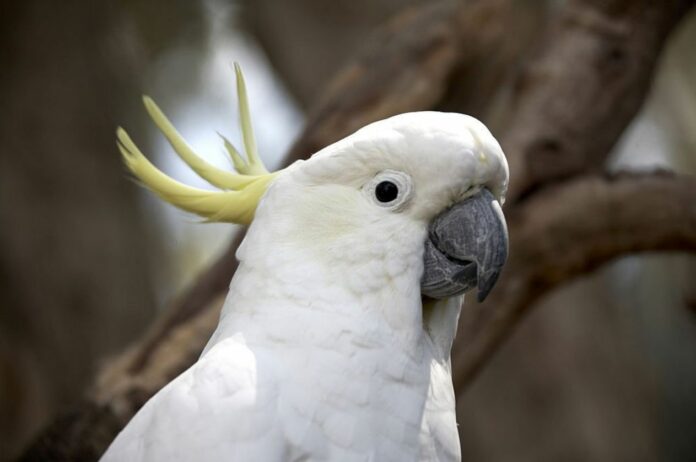Scientists say they find this behavior to be extremely intriguing. It is a phenomenon that has been observed solely in chimpanzees, who are our closest relatives.
Goffin’s cockatoos are white, small parrots that originate from the Tanimbar Islands archipelago in Indonesia.
Goffin’s cockatoos in captivity use and make tools, and a new study of wild-caught cockatoos published today in the journal Current Biology found that they can use up to three different tools to get seeds out of the same fruit.
This is something that has only been seen in chimpanzees, which are our closest relatives.
It was previously uncertain if the cockatoos perceived the tools as a “set”. It was feasible that what appeared to be a collection of tools was just a sequence of individual tool usage, with the requirement for each new tool emerging as the task progresses.
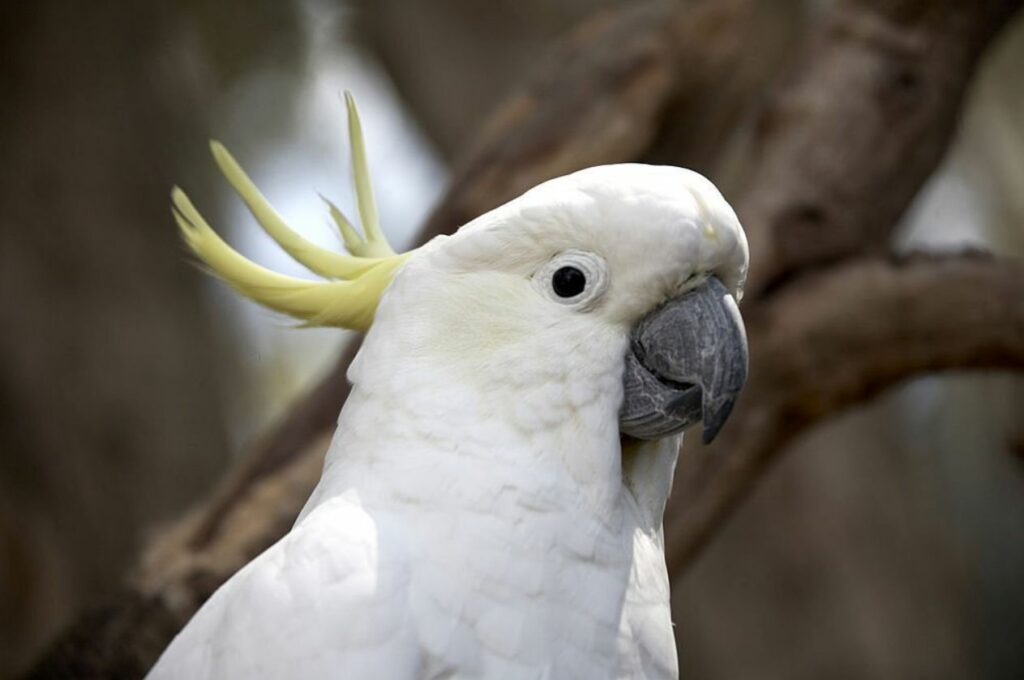
However, a group of scientists have now conducted controlled experiments to demonstrate that the cockatoos can identify when a task requires multiple tools.
“With this experiment,” according to first author Antonio Osuna-Mascaró, “we can say that, like chimpanzees, Goffin’s cockatoos not only appear to be to using toolsets, but they know that they are using toolsets. Their flexibility of behavior is stunning.”
Osuna-Mascaró was inspired by the Goualougo Triangle chimpanzees of northern Congo, who use toolsets to catch termites. They are the only other animals known to use toolsets besides humans.
Chimpanzees follow a two-step method to fish for termites. They use a dull stick to make holes in the termite mound and then insert a lengthy, pliable probe to extract the termites from the holes. In the study by Osuna-Mascaró’s team, the cockatoos were tasked with fishing for cashews instead of termites.
The researchers set up a scenario to imitate the termite-fishing setup by presenting the cockatoos with a box containing a cashew, which was positioned behind a clear paper membrane.
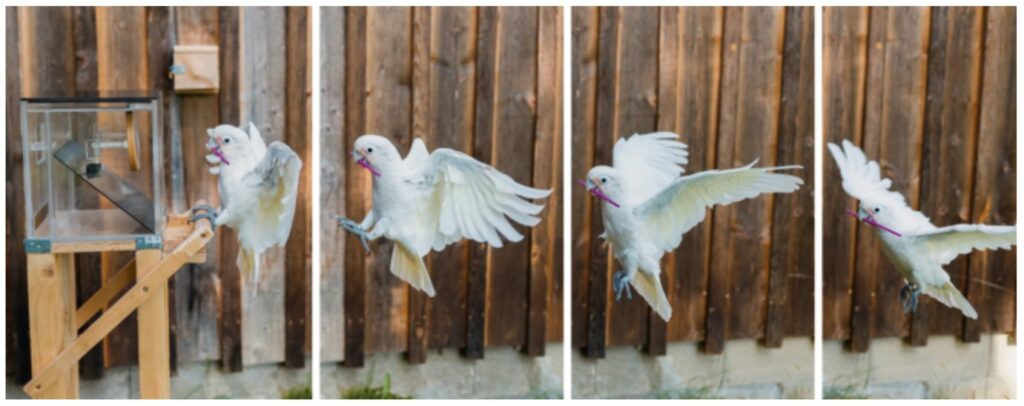
The cockatoos had to punch a hole in the membrane and then “fish” the cashew out to get to it. They were given a short, pointy stick to use for making holes and a plastic straw that had been cut in half vertically to use for fishing.
Two of the cockatoos (Figaro and Fini) completed the job in 35 seconds on their first try, and seven out of the ten examined cockatoos learned to effectively extract cashews by punching through the membrane.
The cockatoos don’t hunt in the same way in the wild, so there was no way that their tool use was based on behaviors they were born with. Each cockatoo used a slightly different method.
The scientists then assessed the cockatoos’ capacity to adapt their tool usage in response to the environment. They did this by giving each cockatoo a choice between a box with a membrane and one without.
The cockatoos were provided with the same two tools, but the sharp stick was only used when a membrane was in the way.
“The cockatoos had to act according to the problem; sometimes the toolset was needed, and sometimes only one tool was enough,” adds Osuna-Mascaró.
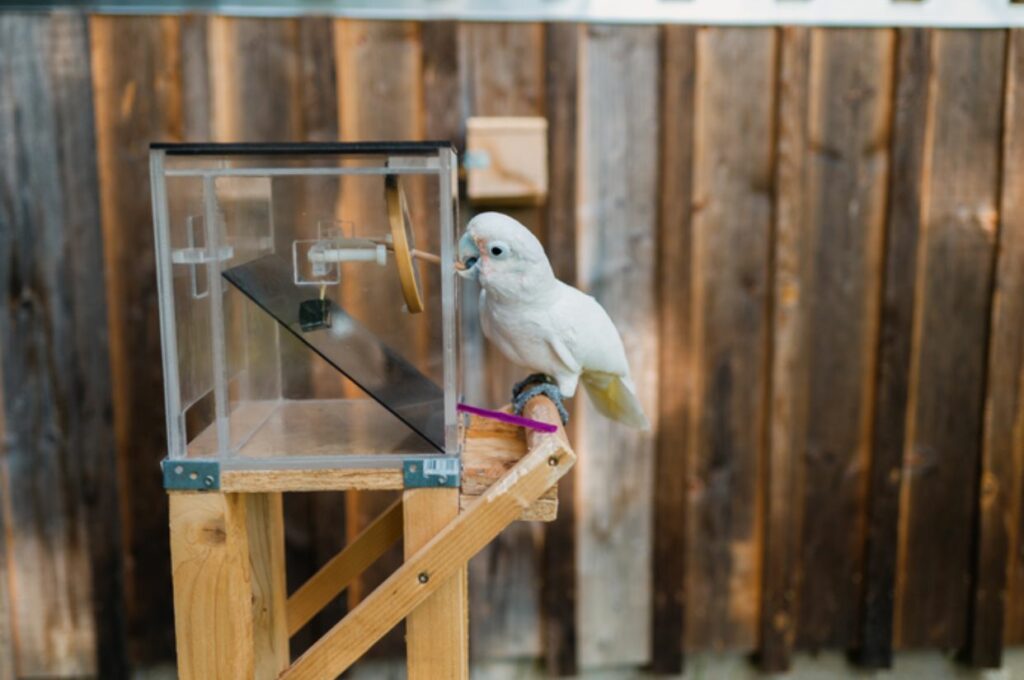
The test was quickly mastered by all of the cockatoos, and they all knew that using only one tool was enough. However, the birds displayed an intriguing behavior when making their choice.
“When making the choice between which tool to use first, they were picking one up, releasing it, then picking up the other one, releasing it, returning to the first one, and so on,” points out Osuna-Mascaró.
The researchers noticed that when the cockatoos switched between tasks, they fared better.
The crew then put the cockatoos to the test to see whether they could carry a set of tools when required.
To get to the boxes, they put the cockatoos through a series of progressively difficult trials: first, they had them fly horizontally while carrying their tools; second, they made them climb a small ladder while doing so; and last, they made them carry the equipment while flying vertically.
The birds once again had to select whether to use one or both tools since they were only sometimes given boxes with membrane barriers.
When they were given a box that needed both tools, some cockatoos learned to carry them together by putting the short punching stick into the groove of the cut straw.
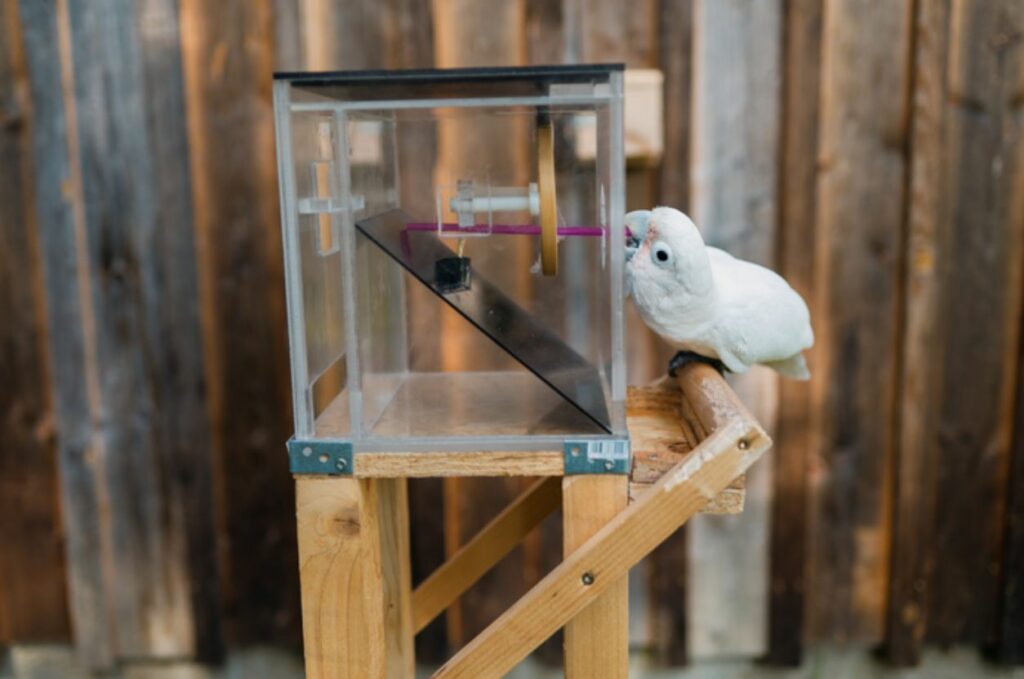
This reduced the number of trips they had to make, but with a heavier toolkit. Although some cockatoos made two visits as required, the majority carried the toolset as needed, showing that they were aware when two tools were needed.
One cockatoo, Figaro, didn’t want to waste time thinking, so he just took both tools with him almost every time.
“We really did not know whether the cockatoos would transport two objects together,” adds senior author Alice Auersperg. “It was a little bit of a gamble because I have seen birds combining objects playfully, but they very rarely transport more than one object together in their normal behavior.”
Researchers say there is a lot more to learn about how cockatoos use tools.
Auersperg adds, “We feel that, in terms of technical cognition and tool use, parrots have been underestimated and understudied.”
“We’ve learned how dexterous the cockatoos are when using a toolset, and we have a lot of things to follow-up on,” adds Osuna-Mascaró. “The switching behavior is very interesting to us, and we are definitely going to use it to explore their decision making and their metacognition—their ability to recognize their own knowledge.”
Source: 10.1016/j.cub.2023.01.023
Image Credit: Getty
